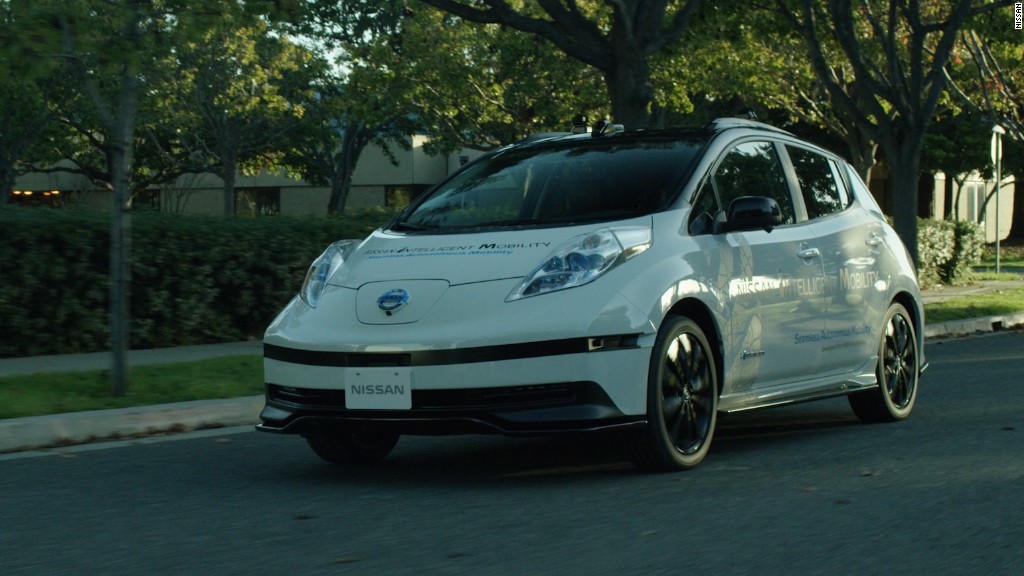
Nissan is turning to NASA technology to speed up the arrival of self-driving cars.
On Thursday at CES 2017, Nissan CEO Carlos Ghosn demonstrated how a car at a NASA campus in Silicon Valley could be remotely piloted from a stage in Las Vegas.
To pull this off, Nissan adopted technology that NASA has used to remotely control robots in space. Nissan (NSANF) calls this SAM, "seamless autonomous mobility." It believes the technology is essential to get millions of driverless cars on our roads quickly.
SAM is also a window into the future of driving jobs. Experts expect that most driving jobs will be eliminated in coming years as autonomous vehicles are able to drive safer and for a lower price than humans. While this will bring some positive effects to our world, it will also leave many people jobless.
Related: 2016: A tipping point for excitement in self-driving cars
With SAM, driving will become a desk job for humans. These workers will sit in offices and remotely take control of vehicles that have encountered situations they can't handle on their own. One human driver might be called on to remotely control dozens of different vehicles during a shift.
A significant roadblock to the implementation of self-driving cars is what experts call edge, or corner cases. These are the unique and challenging situations that a driver might encounter only once or twice in a year, making it difficult for a robot car to prepare for.
This is where Nissan's SAM technology comes in. Imagine if a self-driving car encounters a situation where police officers are directing traffic, following a bad accident that's blocking a street. A self-driving car would struggle to understand an officer's hand gestures. It would likely be programmed to not do certain things requested by the police, such as crossing a double yellow line to drive around an accident.
In these tricky spots, Nissan's cars will stop themselves and request help from its command center.
A human in the command center would be livestreamed video footage from the car. They'd determine the right action and direct the car where to go. Once the car had driven away, the self-driving vehicle would be back in full control. And the human in the command center would stand by to assist the next confused driverless vehicle.
Nissan will be testing self-driving cars in Japan this year. It plans to offer limited autonomous driving on highways in 2018 and in cities in 2020.

